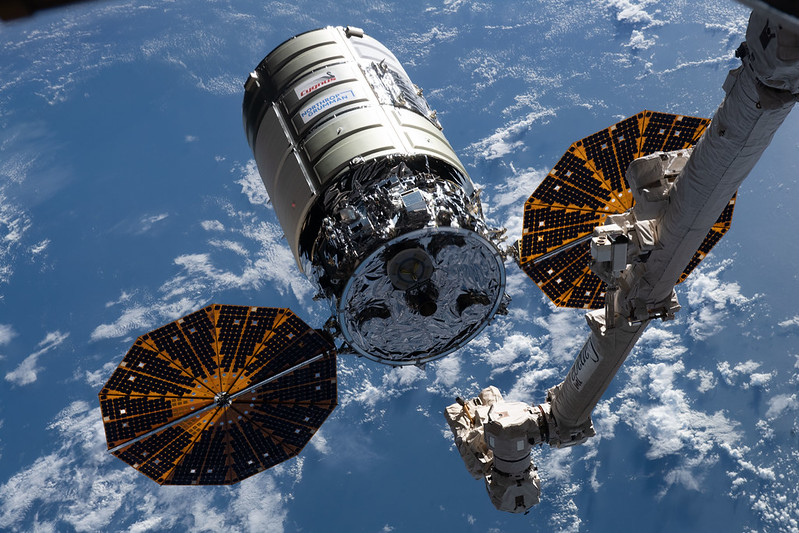Crew Prioritizes Science, Training, and Exercise Before Cygnus Departure

The Expedition 66 crew focused on science, training, and exercise aboard the International Space Station on Friday and prepared for the Cygnus departure tomorrow.
NASA Flight Engineers Raja Chari and Kayla Barron continued the GRIP experiment that they began earlier this week. The experiment studies how long-duration spaceflight affects crews’ ability to regulate grip force and upper limbs trajectories when manipulating objects during different movements. The pair set up hardware and completed GRIP science tasks in the supine position while donning noise-canceling headphones. Chari performed the GRIP science tasks in the seated position as well.
Additionally, NASA astronauts Thomas Marshburn and Barron completed a robotics research session for the Behavioral Core Measures experiment. The study aims to accurately assess the risk of adverse cognitive or behavioral conditions during extended spaceflight. Marshburn and Barron set up the appropriate robotics hardware and performed the BCM testing. Crews are expected to complete the session at least once per month, starting two weeks after they arrive aboard the space station.
For medical training, NASA astronaut Mark Vande Hei and cosmonauts Anton Shkaplerov and Pyotr Dubrov of Roscosmos reviewed rescuer roles for a situation requiring cardiopulmonary resuscitation (CPR). Emergency medical equipment was deployed during the session. The trio practiced CPR positioning to ensure they could perform the procedure in space if necessary.
Focusing on fitness, crews also squeezed in a workout today. The astronauts completed cardio exercises on a stationary bicycle and treadmill fastened to the space station and resistive exercises using equipment that enables them to lift weights in weightlessness. Crews workout on average two hours per day in space. Routine exercise helps astronauts counter the bone and muscle loss that accompanies living and working in microgravity.
Meanwhile, ESA (European Space Agency) astronaut Matthias Maurer transferred data from a fiber-optic monitor called Lumina. The device tracks radiation levels aboard the space station in real-time. Maurer completed the data transfer with an iPad-based application that gathers medical data from astronauts.
Looking ahead, Barron, Chari, Marshburn, and Vande Hei made final preparations to the Cygnus cargo ship, which is slated to depart from the space station on Saturday at 11 a.m. EST. Cygnus arrived at the space station in August carrying more than 8,200 pounds of cargo. Flight controllers will remotely decouple Cygnus from the space station by forwarding commands to the Canadarm2 robotic arm from Earth. Live coverage of the spacecraft’s departure will begin at 10:45 a.m. on NASA TV.
Get the latest from NASA delivered every week. Subscribe here: www.nasa.gov/subscribe
Deepthi Cauligi
Powered by WPeMatico



